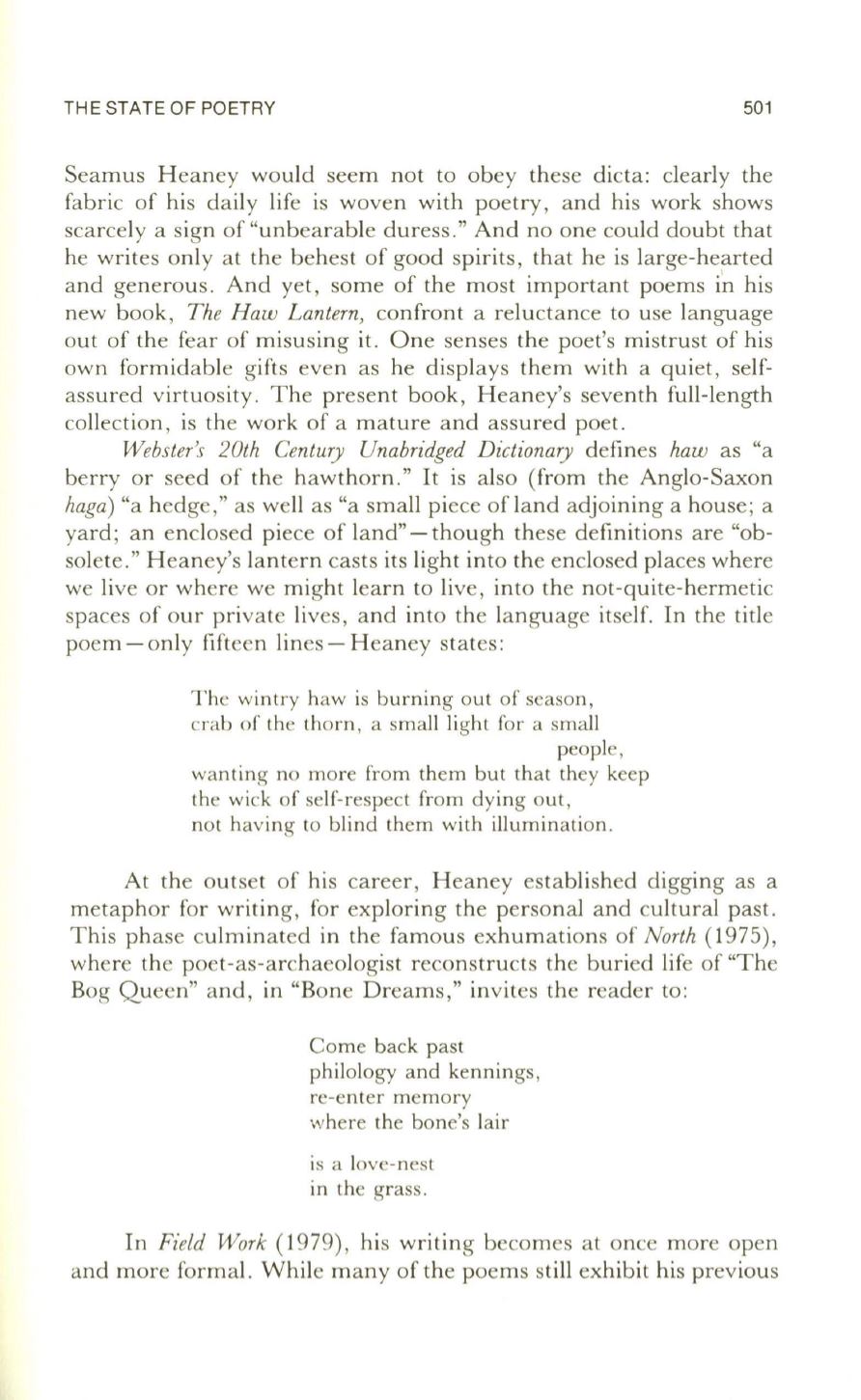
THE STATE OF POETRY
501
Seamus Heaney would seem not to obey these dicta: clearly the
fabric of his daily life is woven with poetry , and his work shows
scarcely a sign of "unbearable duress ." And no one could doubt that
he writes only at the behest of good spirits, that he is large-hearted
and generous. And yet, some of the most important poems in his
new book ,
The Haw Lantern,
confront a reluctance to use language
out of the fear of misusing it. One senses the poet's mistrust of his
own formidable gifts even as he displays them with a quiet , self–
assured virtuosity. The present book, Heaney's seventh full-length
collection, is the work of a mature and assured poet.
Webster's 20th Century Unabridged Dictionary
defines
haw
as "a
berry or seed of the hawthorn." It is also (from the Anglo-Saxon
haga)
"a hedge ," as well as "a small piece of land adjoining a house ; a
yard; an enclosed piece of land" - though these definitions are "ob–
solete." Heaney's lantern casts its light into the enclosed places where
we live or where we might learn to live, into the not-quite-hermetic
spaces of our private lives, and into the language itself. In the title
poem - only fifteen lines - Heaney states:
The wintry haw is burning out of season,
crab of the thorn, a small light for a small
people,
wanting no more from them but that they keep
the wick of self-respect from dying out,
not having
to
blind them with illumination .
At the outset of his career, Heaney established digging as a
metaphor for writing, for exploring the personal and cultural past.
This phase culminated in the famous exhumations of
North (1975),
where the poet-as-archaeologist reconstructs the buried life of "The
Bog Queen" and, in "Bone Dreams," invites the reader to:
Come back past
philology and kennings ,
re-enter memory
where the bone's lair
is a love- nest
in the grass.
In
Field Work
(1979), his writing becomes at once more open
and more formal. While many of the poems still exhibit his previous


